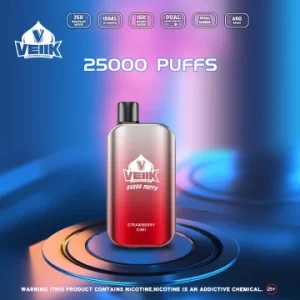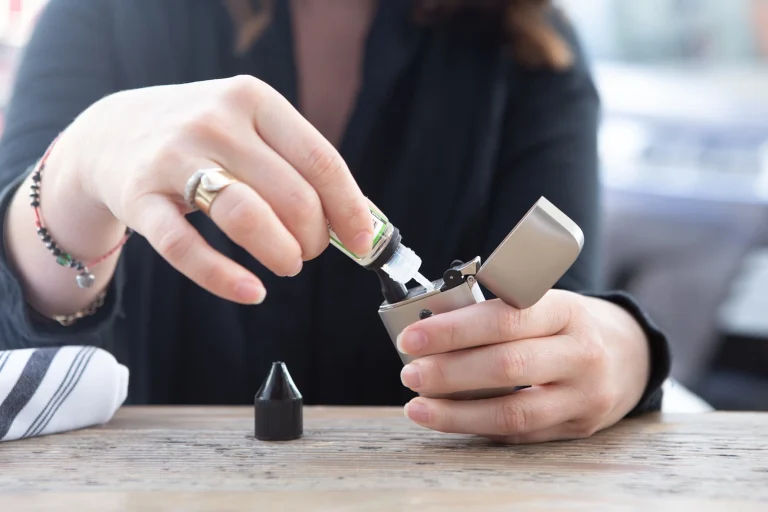The electronic vaping market has grown in the past decade from a very niche industry into a worldwide multi-billion-dollar market segment. There is much to be learned by the business leader who seeks informed decision-making related to vape product sourcing, investment in new technologies, and regulatory environments. In this blog, we’ll explore the key economic factors driving the electronic vaping industry, with a focus on B2B opportunities, the impact of regulations, and how companies can position themselves for success.
The Vaping Industry in Numbers: A Market on the Rise

In the global electronic cigarette market, the graph of growth has been exponential of late. The report estimates that the global vaping market was valued at around $19.61 billion in 2022 and is projected to record a CAGR of about 8.6% during the forecast period, 2023-2030. Growing awareness regarding health risks coupled with traditional smoking, apart from an increased preference for vaping acting as a substitute, acts as a driver for market growth.
While North America accounted for a market share of over 40% in 2022, during the forecast period, growth in Asia-Pacific is expected to be driven by high disposable incomes, along with the rampant number of young adult vapers from China and India.
In particular, disposable vape is gaining momentum. It was reported that in 2023, Euromonitor International said that 56.2% of global sales of e-cigarettes were disposable devices. It reflects the going trend in the market towards the convenience product featuring pre-filled e-liquid, long-lasting battery, and ease of use.
Key Economic Drivers in the Vaping Industry
1. Growing Consumer Demand for Alternatives to Smoking
Increasing demand for healthy alternatives to traditional tobacco smoking is the major driver in the economy of the vaping market. The World Health Organization (WHO) estimates that more than 8 million people die every year only because of the use of tobacco. More people have been concerned with their health, and so, many have turned to vaping as a less harmful alternative, though the long-term health effects remain a topic of ongoing research.
This can most elaborately be seen in the growing younger generation. For instance, a 2019 study conducted by the American Lung Association documented that about 1 in every 5 students attending high school in the U.S. reported the usage of e-cigarettes. As these little consumers grow up, so does the demand for vaping products.
2. Technological Innovation: Driving Market Expansion
Other factors contributing to the driving forces in the market include improvements in vaping technology. The companies continuously work on innovating products that are better and more efficient for both new and seasoned vapers. Variable power settings, customized e-liquids, extended battery life, and unique designs are common features in the industry.
For instance, companies like VEIIK make their innovations by standing at the forefront of such products as the Space Mist disposable vape, which houses a dynamic light show synchronized with the way of vaping, a 3.35-inch TFT super screen display indicating real-time statistics of vaping, and a strong 650 mAh battery for long-run performance. These types of technological advances serve to make vaping more pleasurable and entice large groups of consumers.
3. Pricing of Vape Products and E-Liquid
One basic influencing economic factor is the question of pricing. There can be very lowly priced disposable e-cigarettes to ultra high-end devices, complementarily expensive e-liquids that comprise vape products. A business at the wholesaler level needs to ensure that it is stocking items that offer good margins but do not compromise on product quality.
The average wholesale price for disposable e-cigarettes can range anywhere from $2-$10 per unit, depending, of course, on brands, features, and purchase volume. Premium e-liquids and devices, by companies like VEIIK, will cost even more but offer higher returns due to higher demand for quality products.
Large-scale buyers of vape products should, therefore, consider bulk discount rates, product quality, and shipping costs so that economies of scale are achieved wherein businesses can sell high-quality products at low prices to the end consumer while earning the maximum profit.
4. Market Consolidation and Competition
The trend of consolidation is also at the forefront in the vaping industry, where larger companies are buying out smaller ones for larger shares in the market. While these consolidations are underway, the sector remains competitive, with different brands and their products in continuous innovation.
By 2023, besides international leading brands like JUUL, Blu, and VEIIK, products from differently positioned companies are occupying top ranks. For B2B buyers, the cooperation with well-established and innovative brands means stability and competitive advantages in the jammed marketplace.
Navigating the Regulatory Landscape: A Crucial Factor for Business Success
Indeed, the vaping industry has emerged as the most regulated in almost all countries of the world. Various governments throughout the world are keen on putting a check on selling and marketing electronic cigarettes, particularly due to increasing vaping among youth. This report describes the ever-evolving regulatory setup around e-cigarettes and looks at the legal framework operating in various regions in which companies are either trying to gain entrance or expand.
1. United States: The FDA and E-Cigarette Regulations
In the U.S., e-cigarettes are regulated by the Food and Drug Administration (FDA) under the Family Smoking Prevention and Tobacco Control Act. In 2020, the FDA placed new restrictions on the sale of flavored e-cigarettes, citing concerns about youth appeal. The FDA also requires manufacturers to submit premarket tobacco product applications, known as PMTAs, for approval. This has been a source of delay for many new products hitting the market.
Despite these setbacks, the U.S. happens to be one of the biggest e-cigarette markets. As such, businesses should stay compliant with the regulations set by the FDA, in case they want to see themselves above the law.
2. European Union: TPD Regulations and Health Concerns
The European Union has a similar set of regulations that control e-cigarettes with the Tobacco Products Directive, which has imposed a limit of 10ml on bottles, 20mg/ml as the permissible nicotine content for vape liquids, and stringent rules regarding how vape products must be packaged. In addition to that, the ongoing monitoring within the European Union of the health consequences of the use of e-cigs indicates further restrictions at some point in the future.
It therefore requires those who intend to sell into the EU market to acquaint themselves with the regulations in the same moment they seek to ensure that their products align with the dictates of TPD.
3. China: A Growing Market with Tightening Rules
With the world’s largest producer of vaping products, China is vastly influencing the world’s e-cigarette market. In 2021, however, the Chinese government promulgated new rules that require e-cigarette manufacturers to apply for licensing and submit their products to tough quality controls. These controls are aimed at reining in the growth of unlawful vape sales while advancing growth of the industry in a much-controlled environment.
This would involve a step whereby, for B2B businesses whose product sourcing is through China, familiarization with the local law and partnering with only licensed, compliant manufacturers would avoid legal pitfalls.
What to Expect by Business Leaders: The Future of the Vaping Market
This fast-growing electronic vaping market opens a completely new set of opportunities and challenges for the B2B business. In addition, it will raise demands for more innovative qualitative vape products. Demands will also increase to comply with complex regulatory frameworks. Technology advancements tend to drive the market too, enabling companies to capitalize on new trends, such as customizable vaping experiences and environmentally friendly products.
If your business is engaged in the sourcing of vaping products in bulk, then it is a good option to secure a partnership deal with the reputable supplier such as VEIIK, for novel products and solid support. VEIIK was founded in 2018 with its headquarters in Shenzhen. Growing over a very short time into one of the important keys in the vaping sector,. VEIIK indeed does some very unique mixing of performance and style, keeping the concept of quality, innovation, and customer feedback in mind. The Space Mist disposable vape is no exception.

Why pick VEIIK for your wholesale vape products?
Quality Assurance: Its ingredients are pharmaceutical-grade; therefore, safe and nice to vape.
Innovation: For the first time, dynamic light shows and real-time stats on your vape-VEIIK Space Mist.
International Presence: VEIIK has established itself in more than 40 countries with a professional sale team and an efficient distribution network.
Customer-Centricity: VEIIK is very customer-oriented, it listens to customers for continuous improvements in offering its products.
Conclusion: Sourcing Vape Products for B2B Success
Yet the vape market is a behemoth of opportunity for B2B enterprises, sharply alert to an economic panorama, market trends, and considerations about regulations. By this partnership, especially with trusted suppliers like VEIIK, there is the meeting of quality, innovative products to the demands of consumers within the bounds of industry regulations.









